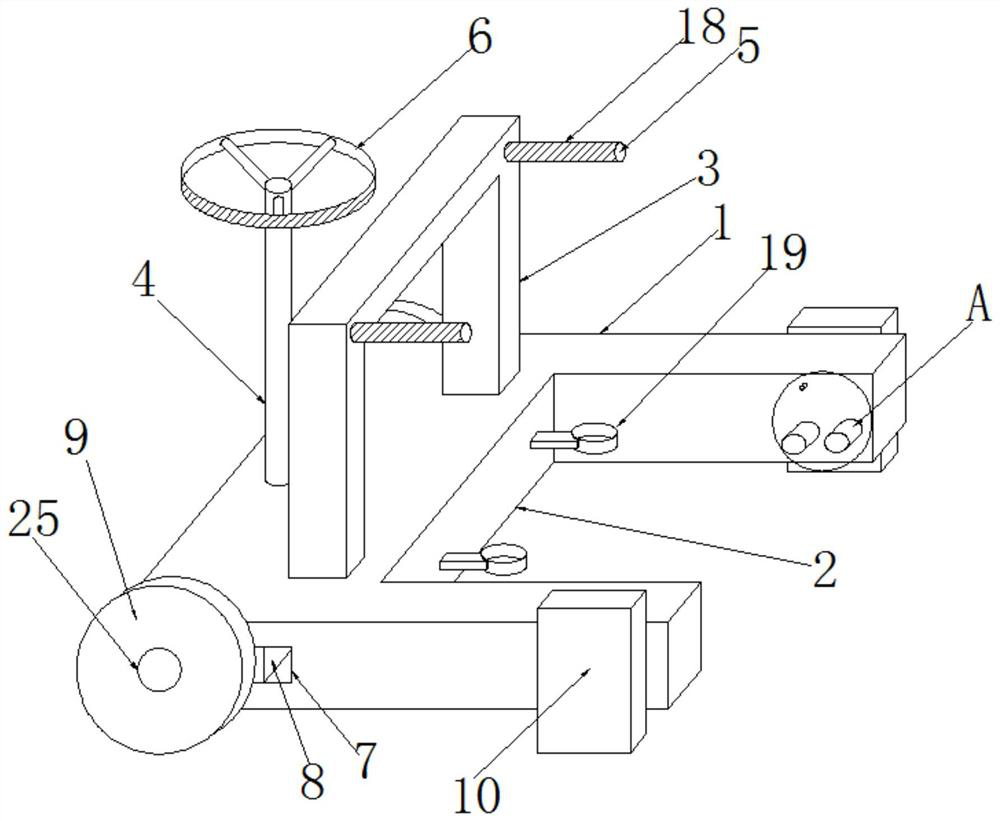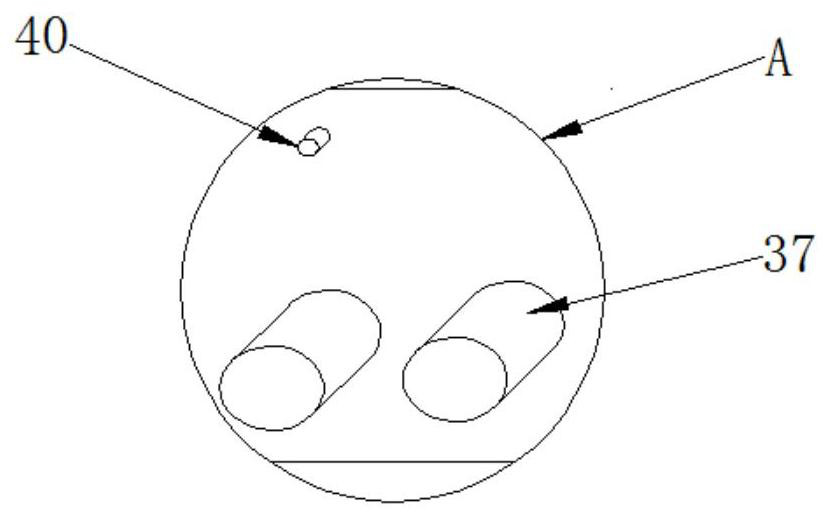Walking aid device for orthopedic nervous system rehabilitation
A neurological and orthopedic technology, applied in the field of medical assistance, can solve the problems of low safety performance, poor comfort, and single structure of the walking aid device, and achieve the effects of high practical performance, reducing fatigue, and improving safety.
- Summary
- Abstract
- Description
- Claims
- Application Information
AI Technical Summary
Problems solved by technology
Method used
Image
Examples
Embodiment 1
[0042] Embodiment one, such as figure 1 As shown, a walking aid for orthopedic nervous system rehabilitation according to an embodiment of the present invention includes a base 1, a groove 2 is provided on one side of the base 1, a support frame 3 is provided on the upper end of the base 1, and a support frame 3 is provided. One side and the upper end of the base 1 is provided with a rotating rod 4, the other side of the upper end of the support frame 3 is provided with two sets of handles 5, the upper end of the rotating rod 4 is provided with an adjusting disc 6, and the inner side of the base 1 is provided with a through groove 7 , the inside of the through groove 7 is provided with a steering mechanism 8, and both ends of the steering mechanism 8 and both sides of the base 1 are provided with rollers 9, and one end of the base 1 and both sides of the groove 2 are provided with a driving device 10.
[0043] By setting the steering mechanism 8, the direction can be adjusted...
Embodiment 2
[0044] Embodiment two, such as Figure 4 As shown, on the basis of Embodiment 1, the present invention provides a technical solution: two sets of fixing rings 19 are arranged on the inner side of the groove 2, and springs 20 are arranged on both sides of the fixing rings 19, and the springs 20 are far away from the fixing rings. One end of the ring 19 is connected to the groove 2 , and one end of the two sets of fixing rings 19 is fixed by Velcro 21 , and the interior of the fixing rings 19 is filled with a sponge 22 .
[0045] By arranging two sets of fixing rings 19, the patient's legs can be placed inside the fixing rings 19, so that the fixing rings 19 can drive the movement of the patient's legs without the need for the patient's legs to move by themselves. By setting the spring 20, it plays a role of buffering , the opening and closing of the fixed ring 19 is facilitated by the Velcro 21, so that the fixed ring 19 is convenient to disassemble, and the inside of the fixed r...
Embodiment 3
[0046] Embodiment three, such as Figure 1-3 As shown, on the basis of Embodiment 1 and Embodiment 2, the present invention provides a technical solution: the steering mechanism 8 includes a fixed rod 11, the fixed rod 11 is located on the base 1, and one side of the fixed rod 11 is located on the side of the base 1 The upper end is provided with a fixed mount 12, and the fixed mount 12 is an L-shaped structure, the lower end of the rotating rod 4 is inserted into one end of the fixed mount 12, and one end of the rotating rod 4 is provided with a gear 13 at the lower end of the fixed mount 12, and the fixed rod 11 The upper end of movable rod one 14 is provided with, and one side of movable rod one 14 is provided with the rack 15 that matches with gear 13, and the two ends of movable rod one 14 are all movably connected with an end of movable rod two 16, and movable rod two 16 An end far away from movable rod one 14 is connected with an end of movable rod three 17, and movable...
PUM
 Login to View More
Login to View More Abstract
Description
Claims
Application Information
 Login to View More
Login to View More - R&D
- Intellectual Property
- Life Sciences
- Materials
- Tech Scout
- Unparalleled Data Quality
- Higher Quality Content
- 60% Fewer Hallucinations
Browse by: Latest US Patents, China's latest patents, Technical Efficacy Thesaurus, Application Domain, Technology Topic, Popular Technical Reports.
© 2025 PatSnap. All rights reserved.Legal|Privacy policy|Modern Slavery Act Transparency Statement|Sitemap|About US| Contact US: help@patsnap.com



